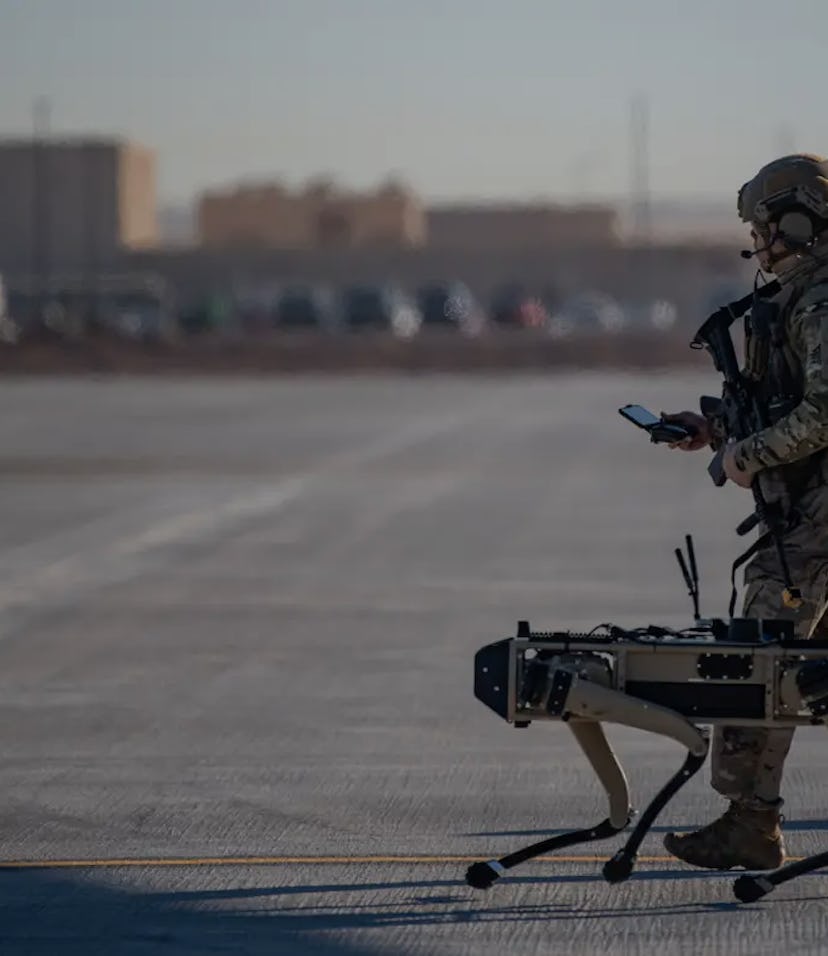Tech
The Air Force tested a robot dog to police its bases in the most dystopian way
The robot dogs could provide persistent security and visual assessments of an airfield under attack.

The U.S. Air Force has tested a robot dog that could someday augment security forces during attacks by providing visual ground assessments. The robot, tested at Nellis Air Force Base in Nevada, was the Ghost Robotics Vision 60, a modular robot that can be customized with sensors and radios (or weapons?) able to be swapped out in minutes.
In the test scenario, a squadron flew from Buckley Air Force Base in Colorado to Nellis and secured the airfield against a hypothetical hostile attack. After landing, the Vision 60 bot kept a tight perimeter around the aircraft while supporting airmen arrived and then stood watch alongside security forces.
Robot dogs — New quadrupedal robots are supposed to be better than robots that move on wheels because they can operate in more environments and over virtually all types of terrain. You've probably seen another similar robot dog, Boston Dynamics' Spot. That robot recently went on sale and is intended for applications like surveilling areas such as mine shafts that would be risky for humans to enter. There's also, of course, that Black Mirror episode...
Both Spot and the Vision 60 can climb stairs, navigate grassy areas, and use lights to look around in the dark, meaning they can survey large areas of an airfield to help security forces find the baddies. Using gyroscopes they can even pop back up in the event someone kicks them over.
There's little detail about what capabilities the Air Force tested on the Vision 60, but images released show operators controlling the robot using a controller and smartphone, which displays a viewfinder for the robot's front-facing camera.
Robot warfare — Unmanned robots are more prevalent in military applications today as commercially-available robots including drones become more advanced.
Theoretically, a robot like the Vision 60 could be used to neutralize attackers on the ground without putting a soldier in harm's way. Boston Dynamics has been funded in part by money from the Defense Department, though it doesn't currently supply robots for military applications, and its previous owner Google said it didn't want the robots being used for killing. That could happen though, considering the military's penchant for unmanned drone strikes.
For now, at least, the Vision 60 is still just a prototype project intended for surveillance. The exercise tested the Air Force's next-generation Advanced Battle Management System, "a state-of-the-art system designed to provide combatant commanders the ability to control Department of Defense assets in real-time."